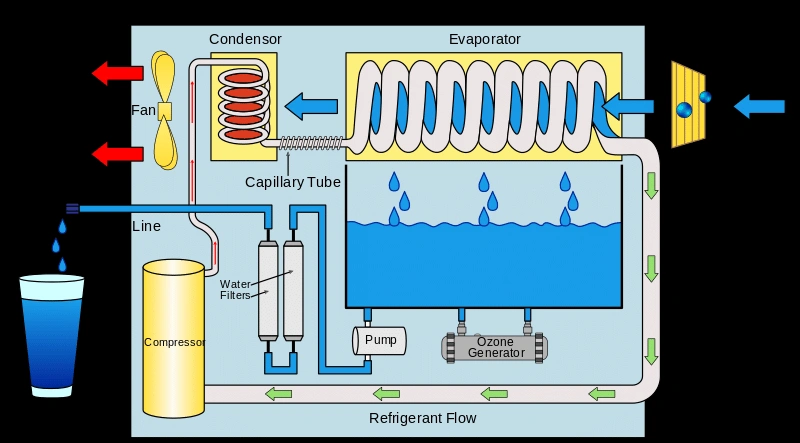
Institutions are harnessing water from the air itself
Use atmospheric water generation (AWG) technology
AWG extracts water vapour from atmosphere, converts it into potable water
In Bengaluru, amidst a water crisis, certain institutions have devised a remarkable solution: they are harnessing water from the air itself. Utilizing cutting-edge atmospheric water generation (AWG) technology, various establishments including government schools and hospitals now boast a reliable water source within their premises.
AWG functions by extracting water vapour from the atmosphere and converting it into clean, potable water, completely free of microbes. Through the process of condensation, vapour is transformed into water droplets, which then undergo rigorous filtration and mineral infusion via a specialized cartridge.
One of the early adopters of this technology, K. R. Puram Government Hospital, installed two AWGs nearly four years ago, each with a capacity of 300 litres. These generators cater to essential needs within the hospital, particularly in the dialysis center and maternity division, serving the community in east Bengaluru.
While AWGs typically yield more water during rainy and winter seasons, lower humidity levels in the summer can diminish output in certain installations. Despite this, the efficiency of AWGs remains impressive.
Operational costs are also manageable, with an energy consumption rate of 0.25 units per litre and an overall cost of ₹2 per litre. Maintenance requirements are minimal, akin to RO systems, necessitating only annual filter cleaning.

Institutions are harnessing water from the air itself
Use atmospheric water generation (AWG) technology
AWG extracts water vapour from atmosphere, converts it into potable water
In Bengaluru, amidst a water crisis, certain institutions have devised a remarkable solution: they are harnessing water from the air itself. Utilizing cutting-edge atmospheric water generation (AWG) technology, various establishments including government schools and hospitals now boast a reliable water source within their premises.
AWG functions by extracting water vapour from the atmosphere and converting it into clean, potable water, completely free of microbes. Through the process of condensation, vapour is transformed into water droplets, which then undergo rigorous filtration and mineral infusion via a specialized cartridge.
One of the early adopters of this technology, K. R. Puram Government Hospital, installed two AWGs nearly four years ago, each with a capacity of 300 litres. These generators cater to essential needs within the hospital, particularly in the dialysis center and maternity division, serving the community in east Bengaluru.
While AWGs typically yield more water during rainy and winter seasons, lower humidity levels in the summer can diminish output in certain installations. Despite this, the efficiency of AWGs remains impressive.
Operational costs are also manageable, with an energy consumption rate of 0.25 units per litre and an overall cost of ₹2 per litre. Maintenance requirements are minimal, akin to RO systems, necessitating only annual filter cleaning.
